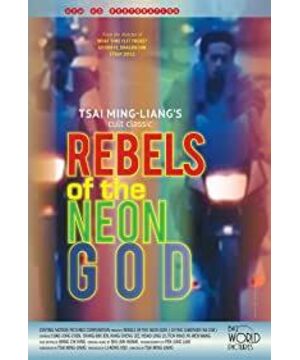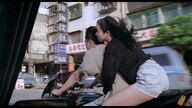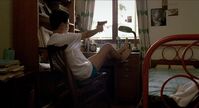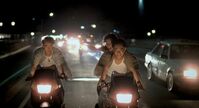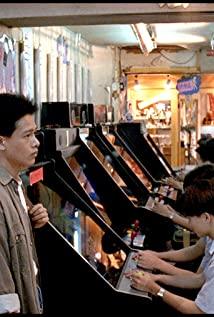Teenage Nezha is Cai Mingliang's first feature film. Li Kangsheng was still a teenager at that time. Maybe he didn't know that Cai Mingliang wanted to record his entire life in a movie. Cai Mingliang's alien enchantment could no longer escape the damp Sex and the City.
Compared with Cai Mingliang's other films, the teenage Nezha retains more impulses. From the time line, Cai Mingliang has been simplifying the film, or shooting in a more indifferent direction. Along the way, his films became more and more pure, but also more and more boring. In this sense, the teenager Nezha actually realized a vivid Cai Mingliang.
In this film, the atmosphere created by Tsai Mingliang is vivid. When A Ze was riding a motorcycle through the city, accompanied by the sound of music, the materialistic atmosphere of Taipei City set off the dark yellow age. Under this oppressive and turbulent sense of age, the down-and-out and rebellious young Azer seems to have a bit of heroic spirit. He is rebellious, loyal, and dares to act.
These qualities of A Ze deeply attracted Xiaokang. Under the agitation of adolescence, Xiaokang became "Nezha". The mana in him tried to break through the cage of the modern civilized world. He fought against his father; he dropped out of school without permission to take the refunded tuition fees and wandered around; he used pranks to stimulate the object of his admiration, Azer. His behavior is rigid but powerful. When he killed the flying insect, he accidentally stabbed his palm. He accidentally caused trouble for Azer in order to have contact with Azer. He was always like an animal. Impulsive, but as lonely as a silent sculpture.
In Cai Mingliang's later images, Li Kangsheng has always maintained this loneliness and morbid appearance, shuttled back and forth in the city, the desire to express nowhere in his heart has deformed him, and the pressure on him has become more and more difficult. Like people in the real world, it is pressed into a symbol to symbolize the desire of the lonely. He was lonely and even angry, but he was no longer as powerful as "Nezha".
In terms of film technique, long shots are a typical feature of Tsai Mingliang's films. Cai Mingliang replaces the dramatic narrative with empty long shots, making the film space empty and long. Tsai Ming-liang himself has stated that he cares about the feeling of the film rather than the result. He uses non-narrative images to give people a feeling of indifference and depression. The processing of these indifferent images is to break Li Kangsheng from his surroundings and make all of Li Kangsheng's actions appear more lonely.
Starting from the teenage Nezha, Cai Mingliang can choose to be more vivid or more abstract, he obviously chose the latter, which makes his films more and more pure and authoritative, but I still I prefer teenage Nezha, because in those days, Xiaokang's impulses gave me a sense of reality that went beyond the screen.
View more about Rebels of the Neon God reviews


